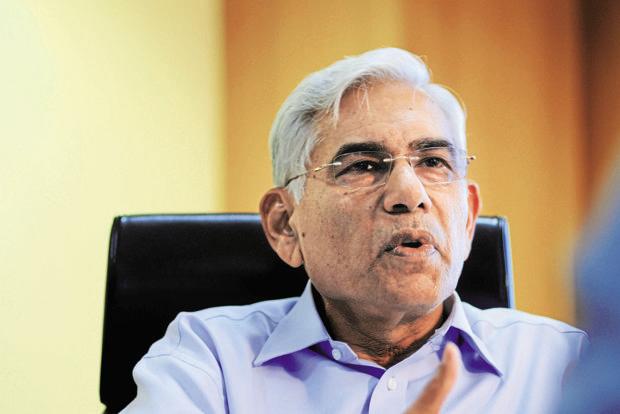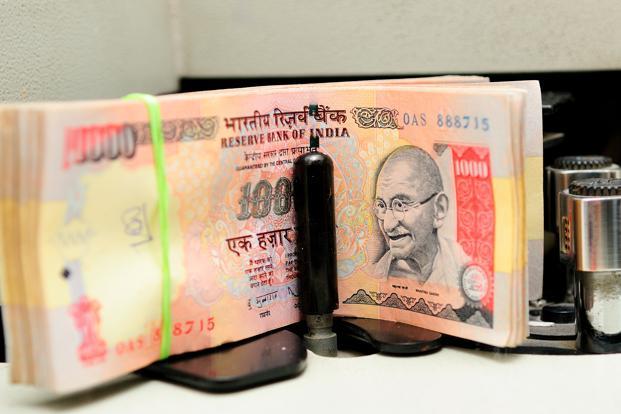Shares of Bharat Financial Inclusion Ltd, earlier known as SKS Microfinance Ltd, on Friday closed at Rs.909.20—inching closer to the price at which retail investors had bought its shares in an initial public offering (IPO) six years ago. The Rs.1,654 crore SKS IPO in July 2010, the first by any microfinance company in India and second in the world, was subscribed 13.7 times. The shares were sold at Rs.985 in the IPO, but retail investors were given a discount of Rs.50. It was listed on 16 August 2010 and soon rose to Rs.1,490. That was before a crisis hit the microfinance industry following the promulgation of a state law in Andhra Pradesh. The law prompted large-scale defaults by borrowers and drying up of bank funds to the microfinance sector, and the SKS stock soon plunged to Rs.54.5 as investors rushed to sell.
The company posted a net profit of Rs.235.91 crore in the June quarter, an almost four-fold increase from Rs.61.16 crore a year ago on higher total income and a Rs.96.85 crore tax write-back, beating analysts’ estimates. The gross non-performing assets (NPAs) for the quarter were 0.1% and, after setting aside money for bad loans, the net NPAs were 0.03%. Its loan portfolio rose 76% to Rs.8,463 crore from Rs.4,797 crore in the year-ago period.
Another listed microfinance company which is on its way to become a small finance bank, Ujjivan Financial Services Ltd’s stock rose to Rs.540.85 on Friday before closing at Rs.511.40. In May, Ujjivan’s Rs.887 crore IPO was subscribed 41 times. In less than three months since its listing, the stock price has more than doubled. On Friday, Ujjivan announced a Rs.71.37 crore net profit for the June quarter, more than double the profit it had reported in June 2015. Its loan book jumped 66% in the past one year to Rs.5,850 crore. Its gross NPAs in June were 0.18% and net NPAs, 0.04%.
The third listed microfinance entity, Equitas Holdings Ltd, closed at Rs.196.35 on Friday, losing around 2.5%, but it’s still trading at around 80% higher than its IPO price of Rs.110. Its Rs.2,163 crore IPO in the first week of April was subscribed 17 times. Its June-quarter net profit rose 60%.
Clearly, there is a re-rating of non-banking financial companies (NBFCs); investors are pulling out of banks and putting their money in NBFCs as they are growing faster than banks and their quality of assets is far better. The price-to-book ratio of Bharat Financial—which we get by dividing the current price of the stock by the book value per share—is probably the highest among all NBFCs barring mortgage lender Gruh Finance Ltd. Bharat Financial’s one-year forward price-to-book ratio is around 5.5, far higher than the best-performing private banks on the stock market like HDFC Bank Ltd and Kotak Mahindra Bank Ltd (both around 3.75), IndusInd Bank Ltd (3.5) and Yes Bank Ltd (close to 3). Among public sector banks, only State Bank of India’s one-year forward price-to-book value is higher than 1. Many of them are trading at half of their book value.
This is because most public sector banks have bloated bad loans and very few of them are actually growing the loan books. A handful of them announced their June-quarter earnings and they indicate that there is no respite from adding to the pile of bad loans and shrinking balance sheets.
The banks are not lending for fear of accumulating more bad loans and the NBFCs are taking advantage of that. What we are witnessing in the Indian financial sector now is quite unique. The Reserve Bank of India seems to be pushing for a bank-led financial system, but the business of lending is increasingly becoming sector agnostic because of the emergence of new channels such as mobile and Internet.
The banking regulator has given conditional licences to eight microfinance institutions to set up small finance banks; it also wants some of the larger NBFCs to become wholesale banks. However, for an NBFC, particularly a microfinance entity, the incentives to become a bank is far less today than in the past. They don’t need to entirely depend on banks for resources anymore; the Micro Units Development and Refinance Agency Bank as well as the National Bank for Agriculture and Rural Development are giving them funds. Besides, they can also collect deposits from the borrowers and cater to their need for savings by being a business correspondent of banks. Finally, new channels are being used to disburse loans.
Indeed, they will have to follow stricter norms for recognizing bad loans—from non-payment for 180 days to 90 days, on the line of banks—but this is not happening overnight. Similarly, their capital requirement by the end of the current financial year will not be as high as it was prescribed by an RBI panel in 2014. Finally, the drop in the yield of 10-year government bond, currently trading at its lowest since 2009, indicates that their cost of borrowing can only go down. No wonder then that the NBFCs have aggressively been building their retail books and the banks, though reluctant to lend to the borrowers directly, are happy to increase their exposure to these companies.
The NBFCs have got a fresh lease of life in the Indian financial system but does that explain the investors’ bullishness on a few of them, particularly the two MFIs that will become small finance banks? One thing is for sure that once they become banks, they will not be able to sustain the pace of growth in their loan book as they would need to focus on raising liabilities from the public in the form of deposits and that won’t be a cakewalk. There is also no clarity on whether Ujjivan and Equitas would need to tap the market again after three years of starting the bank. Under the RBI norms, listing is mandatory for a bank within three years. Both the entities have listed their holding companies. Of course, the regulator can always relax the norms either by accepting the listing of a holding company as a proxy for a bank or giving them more time for the bank listing.



